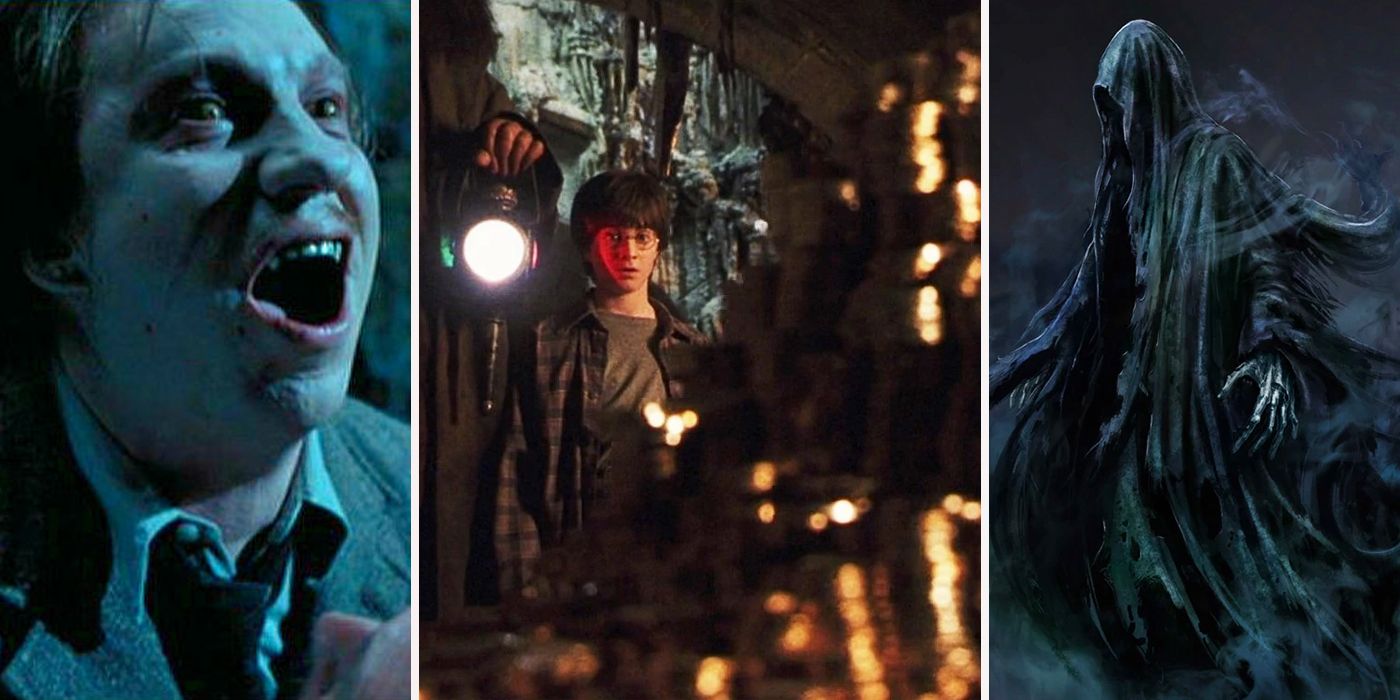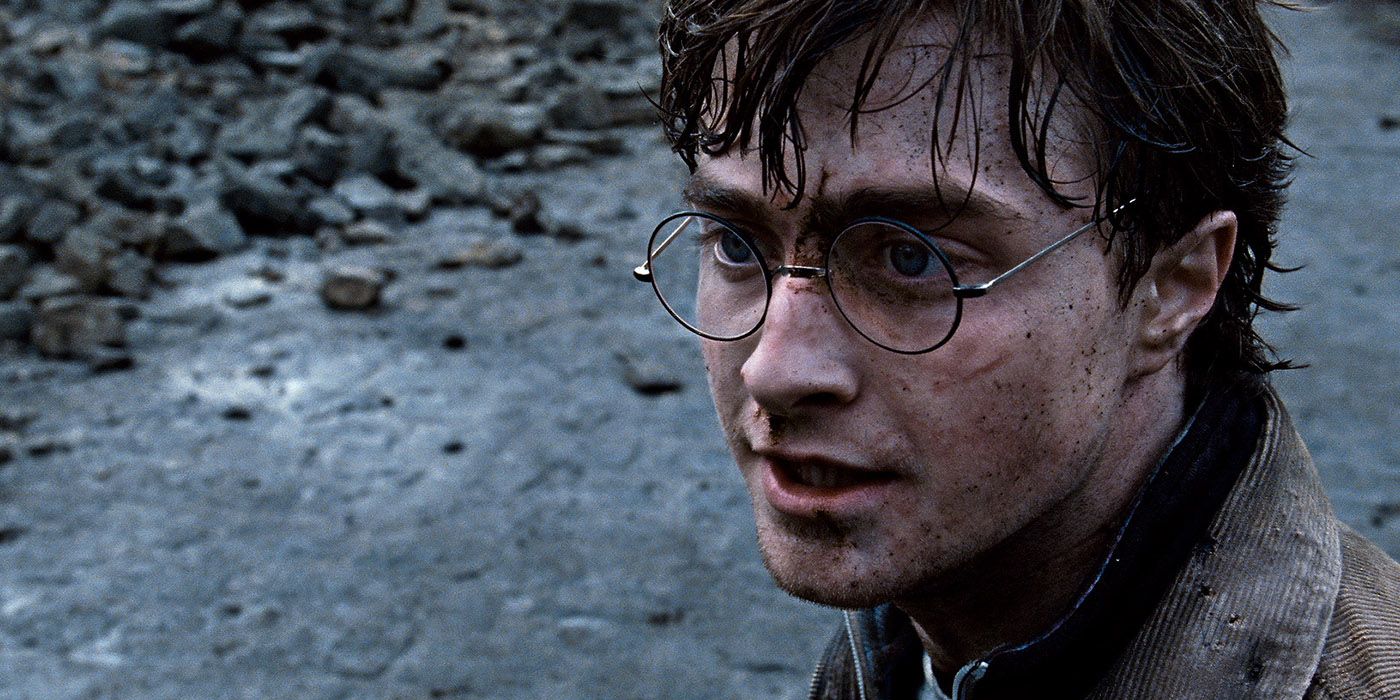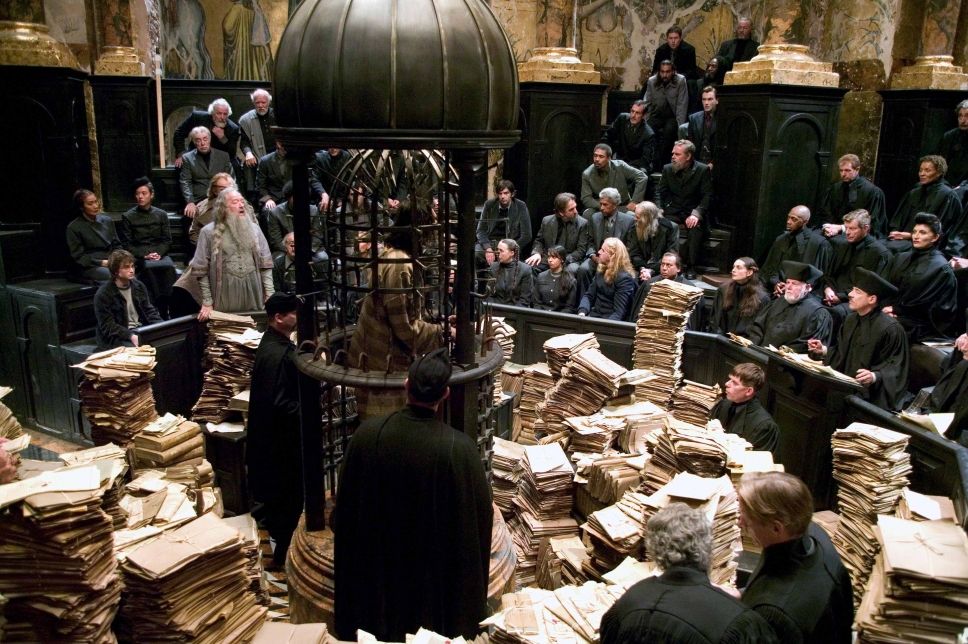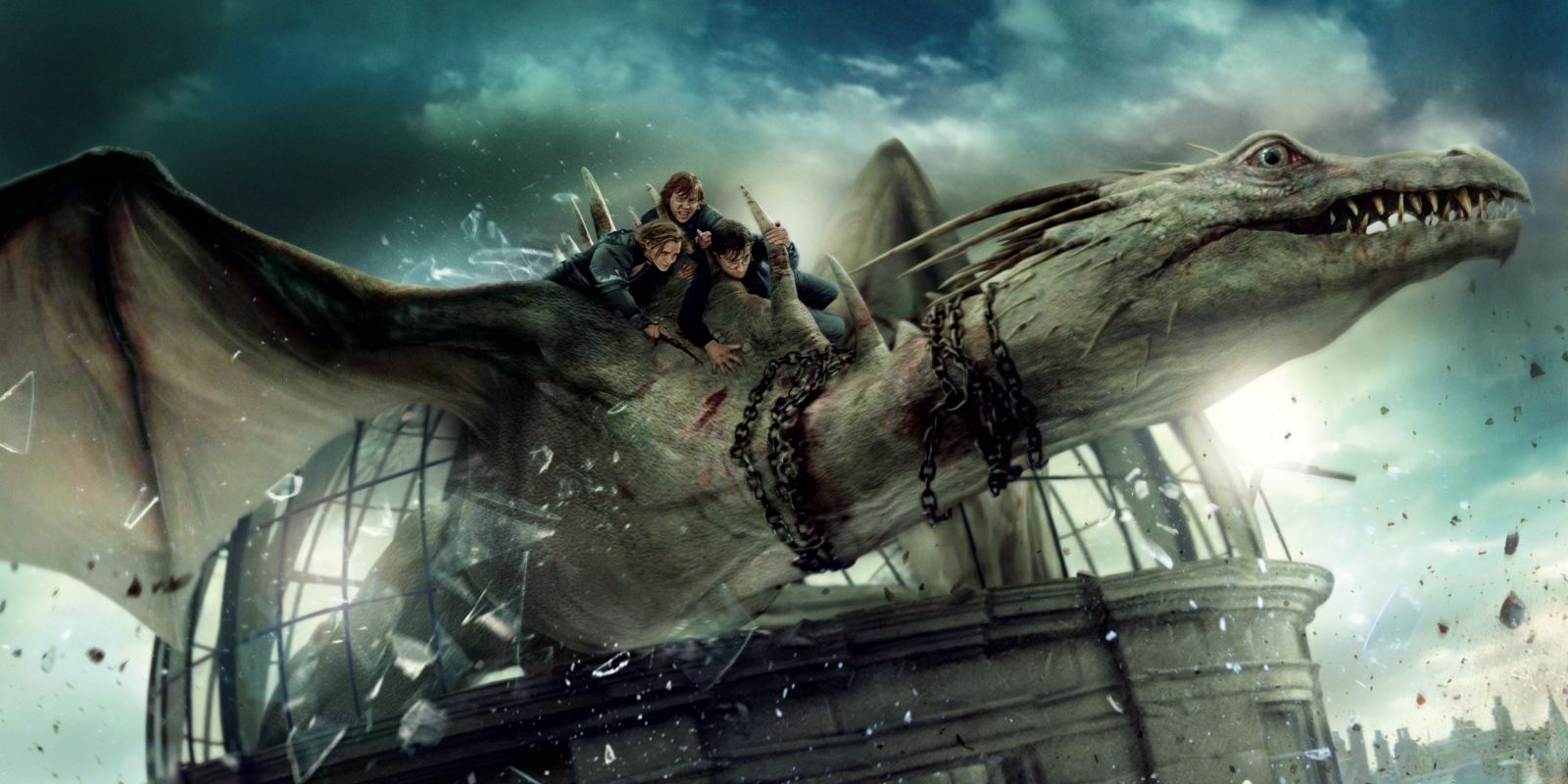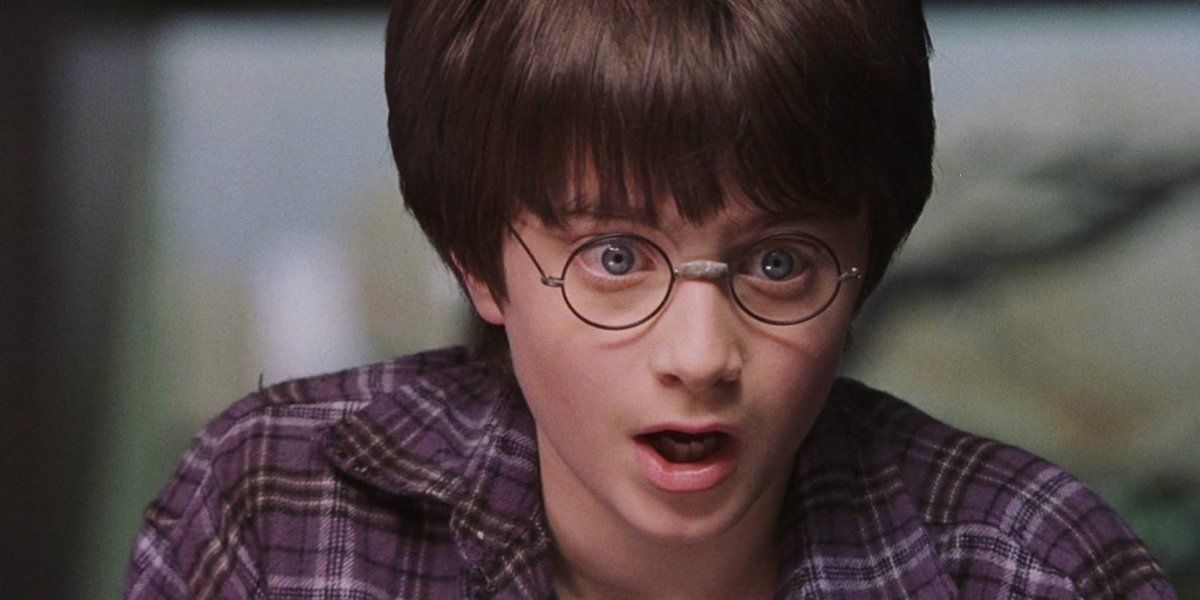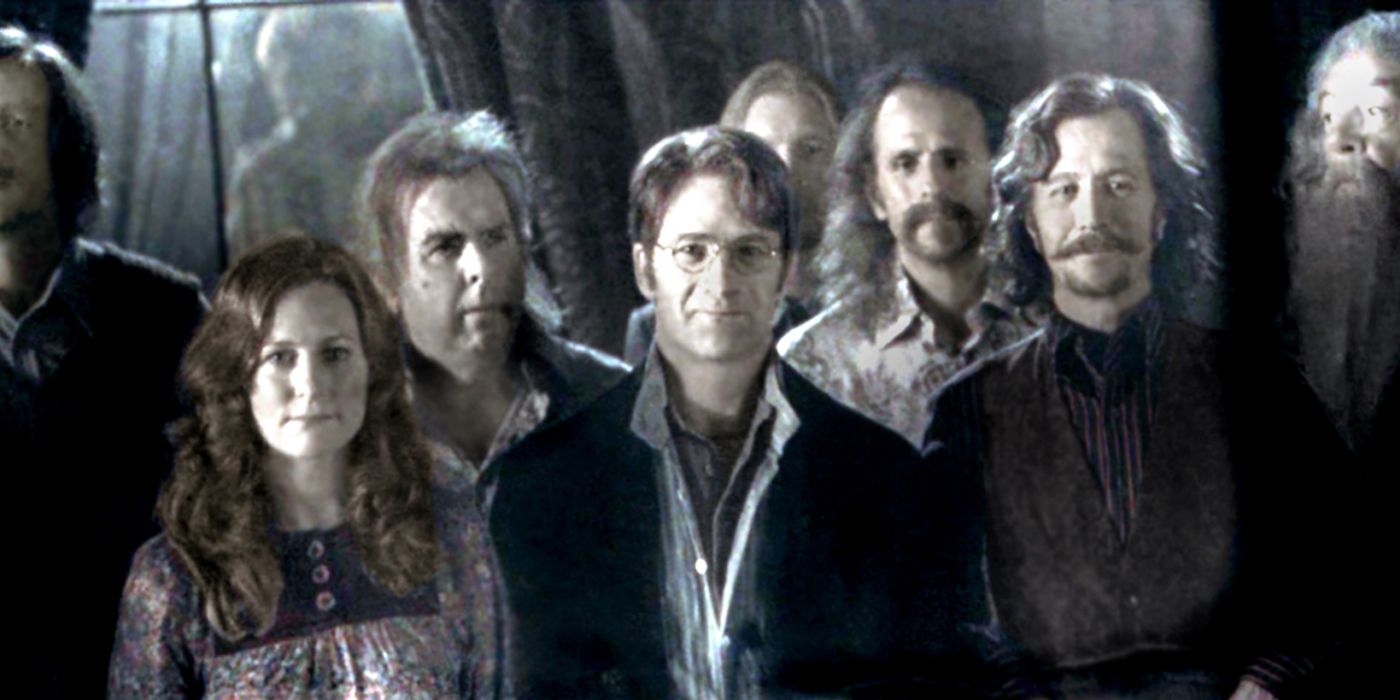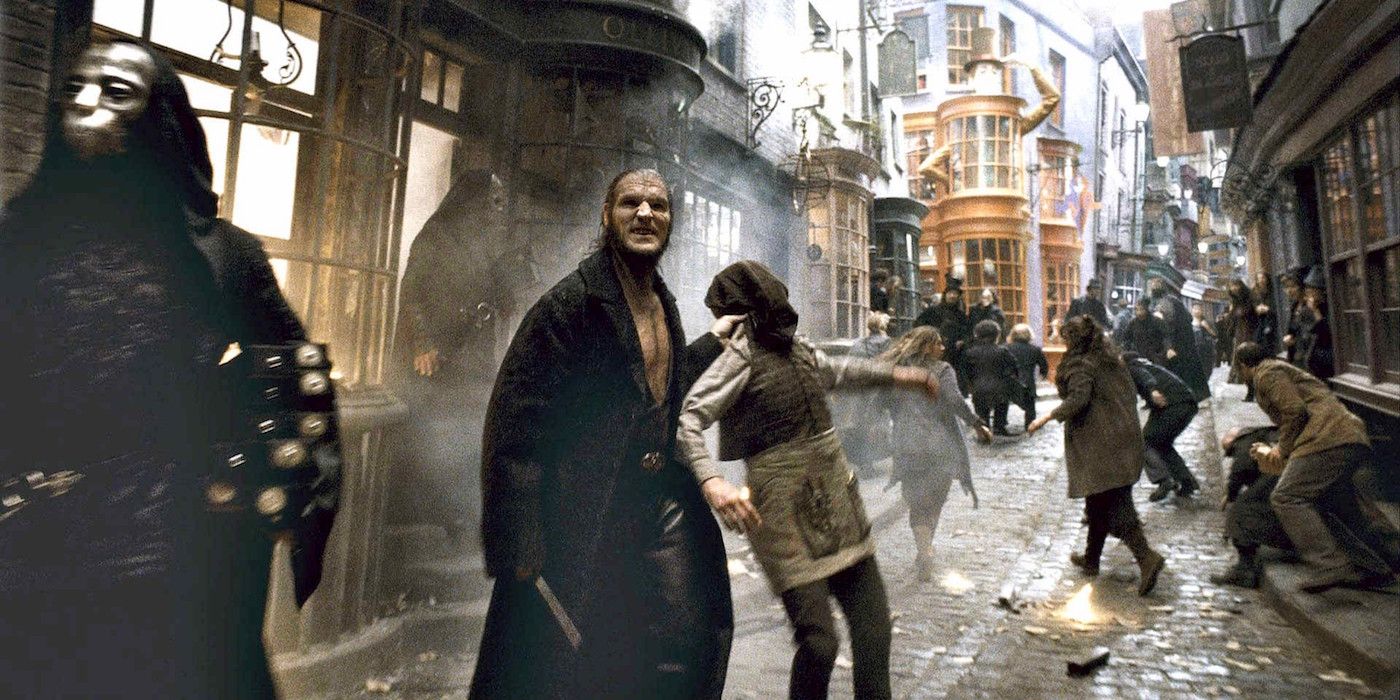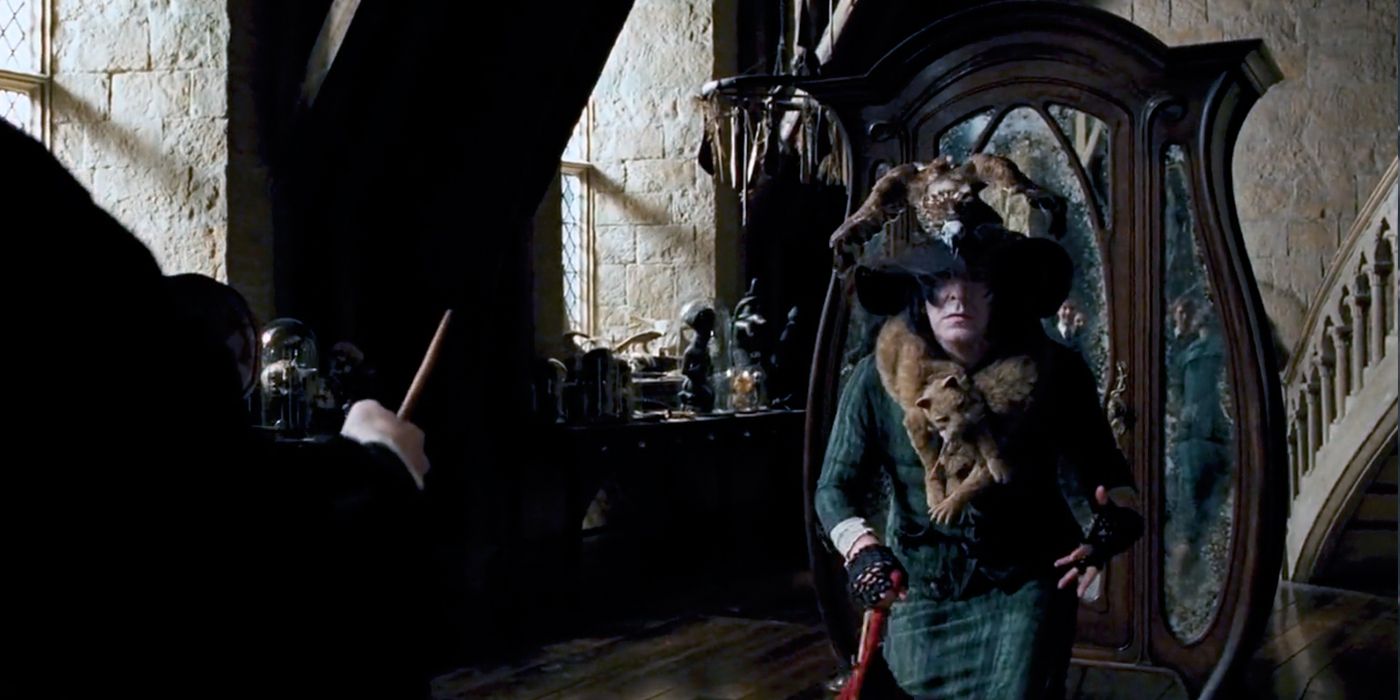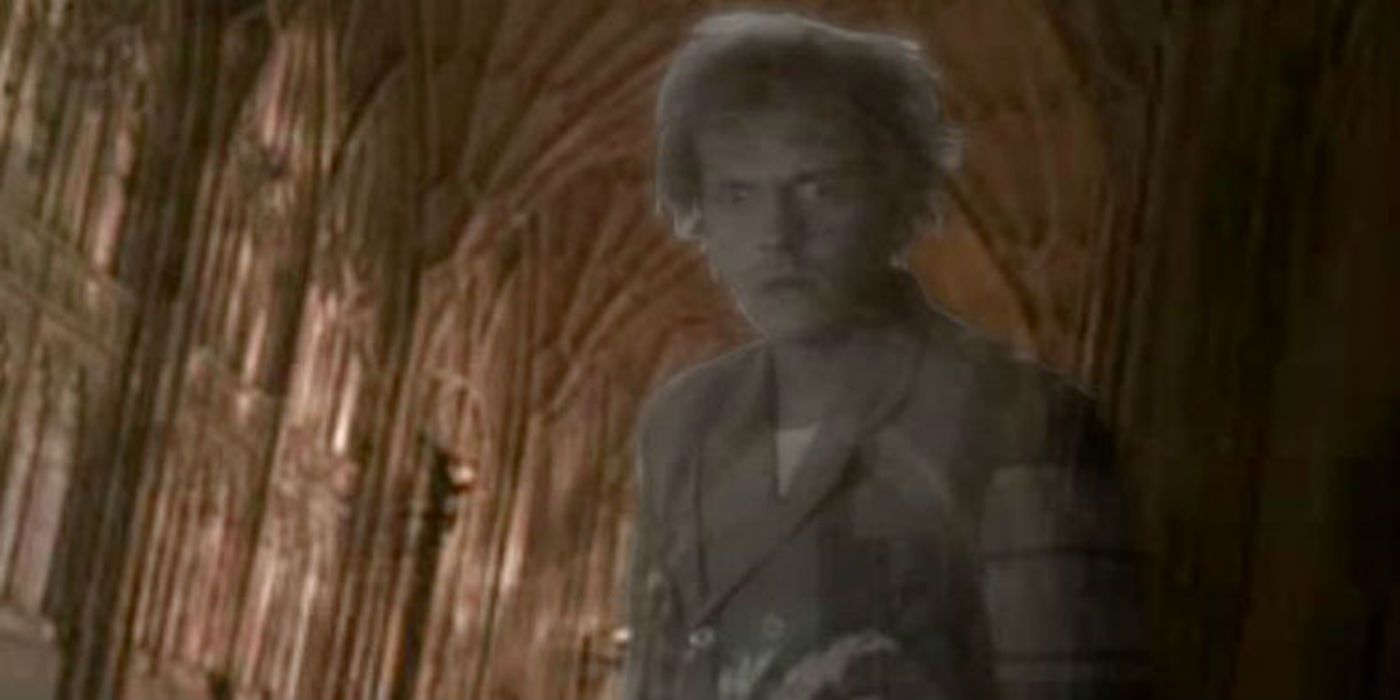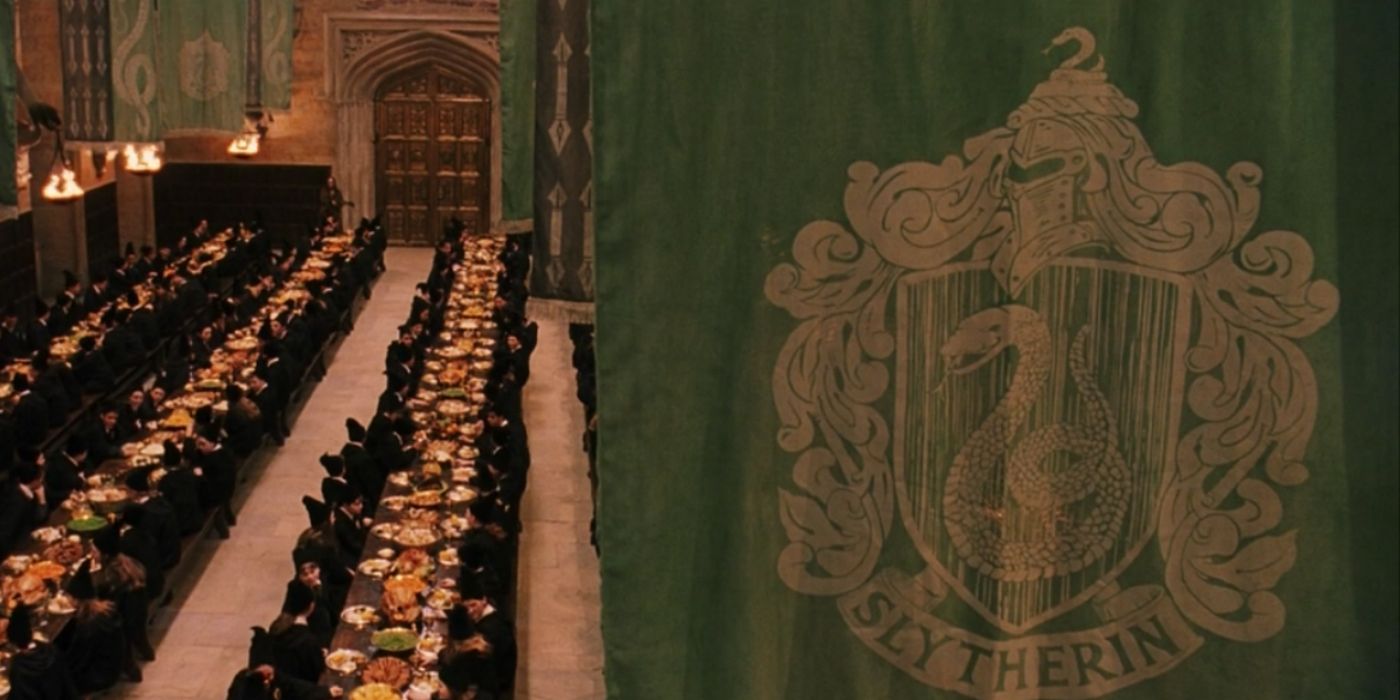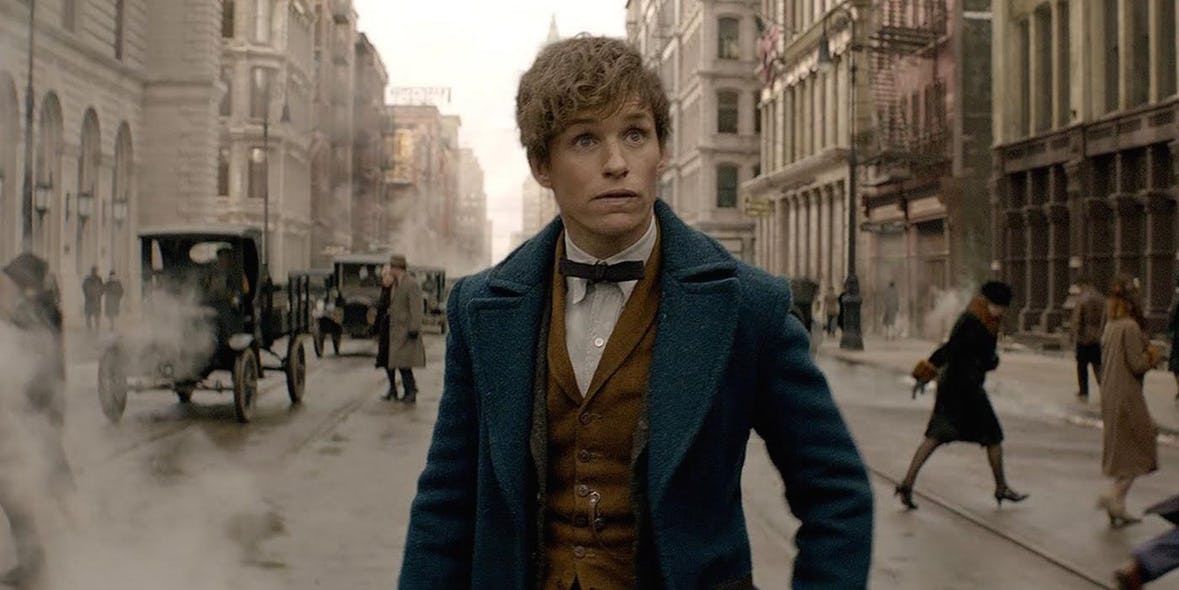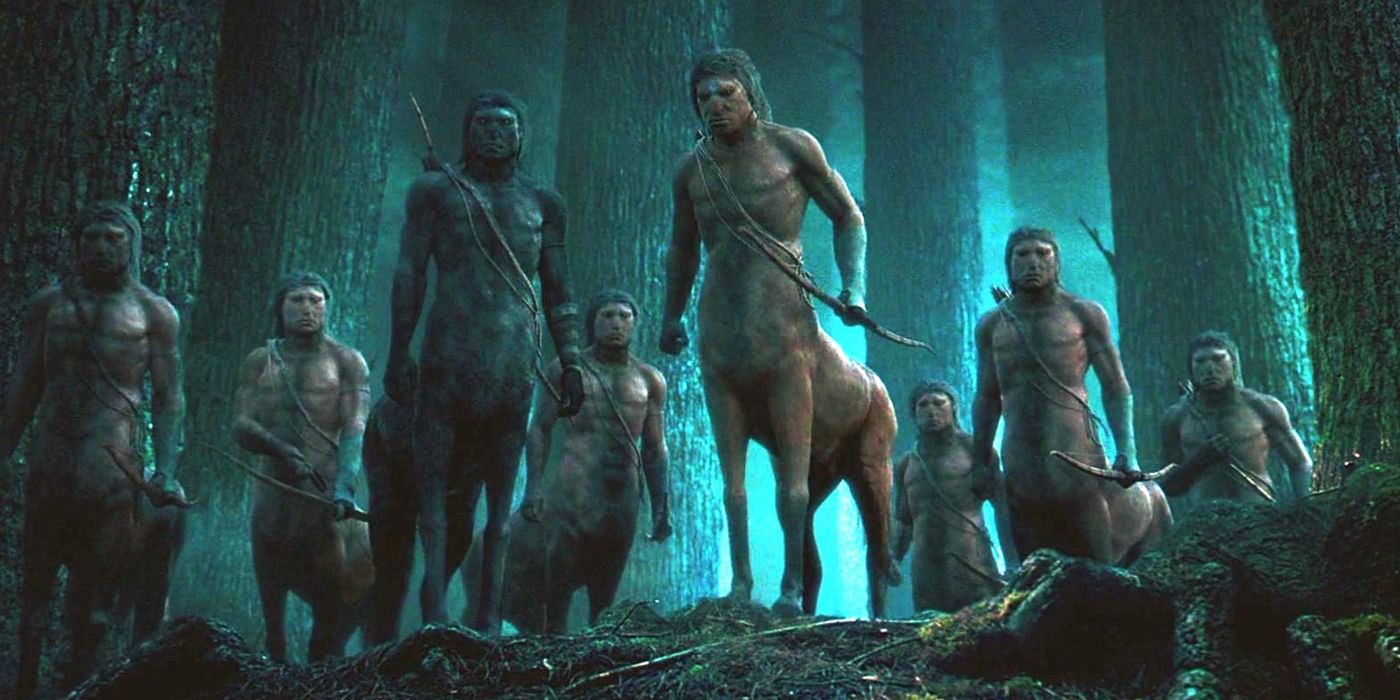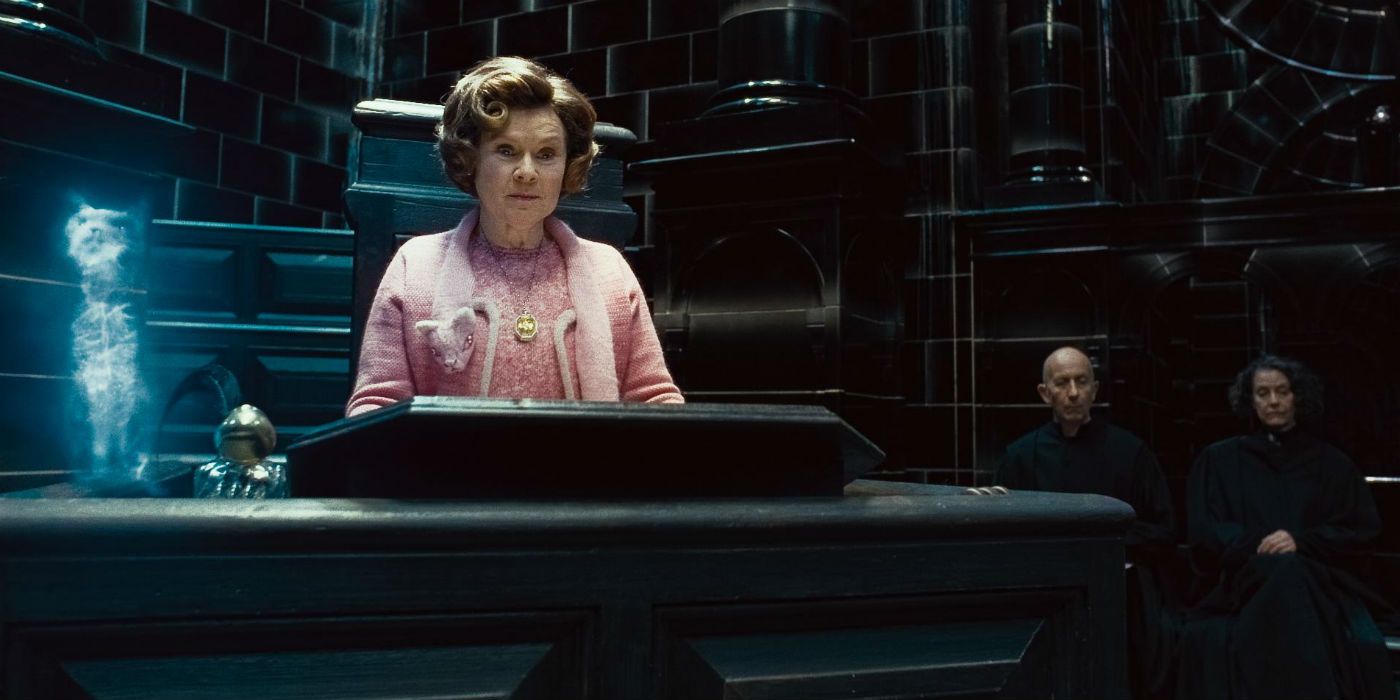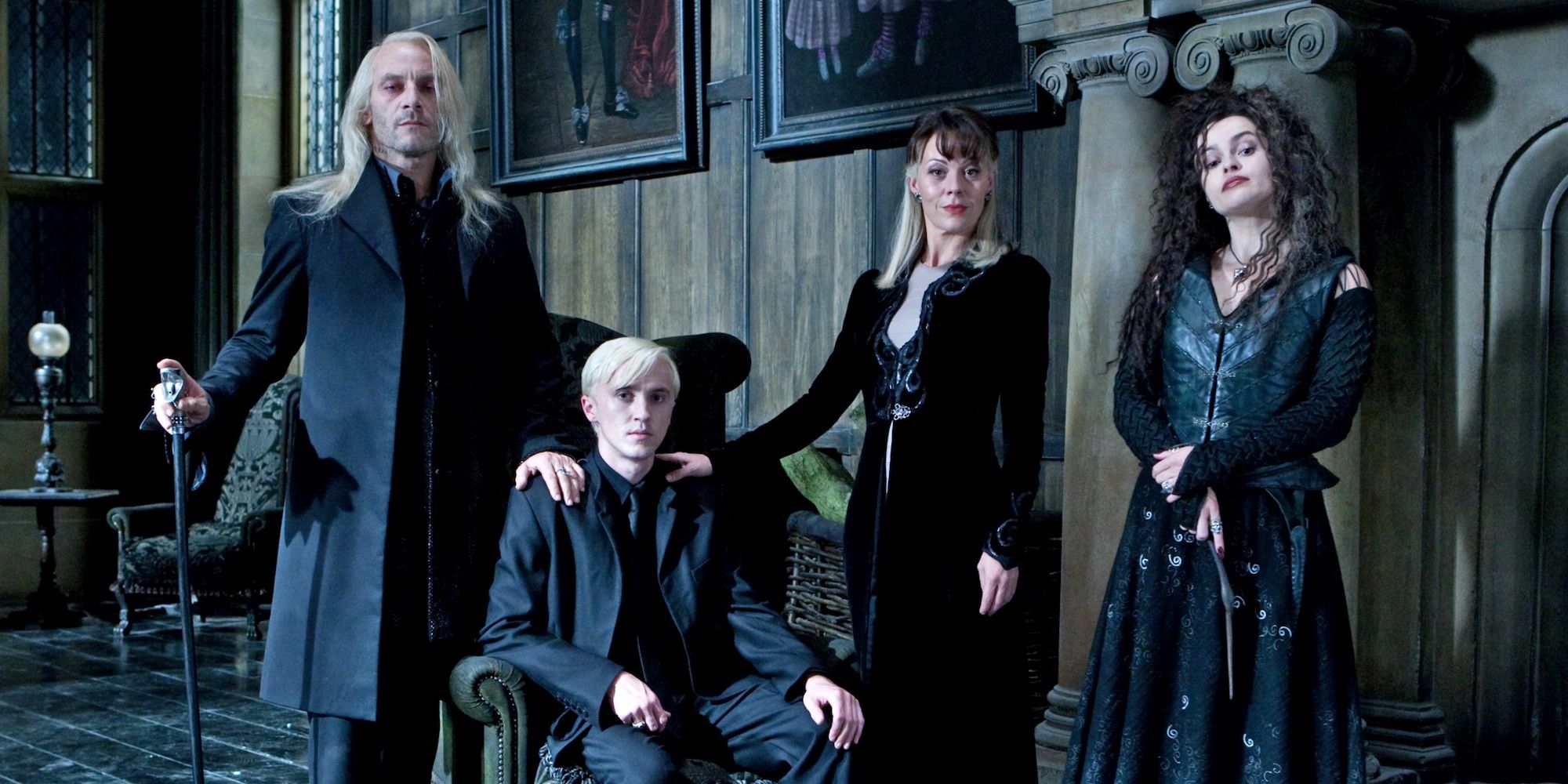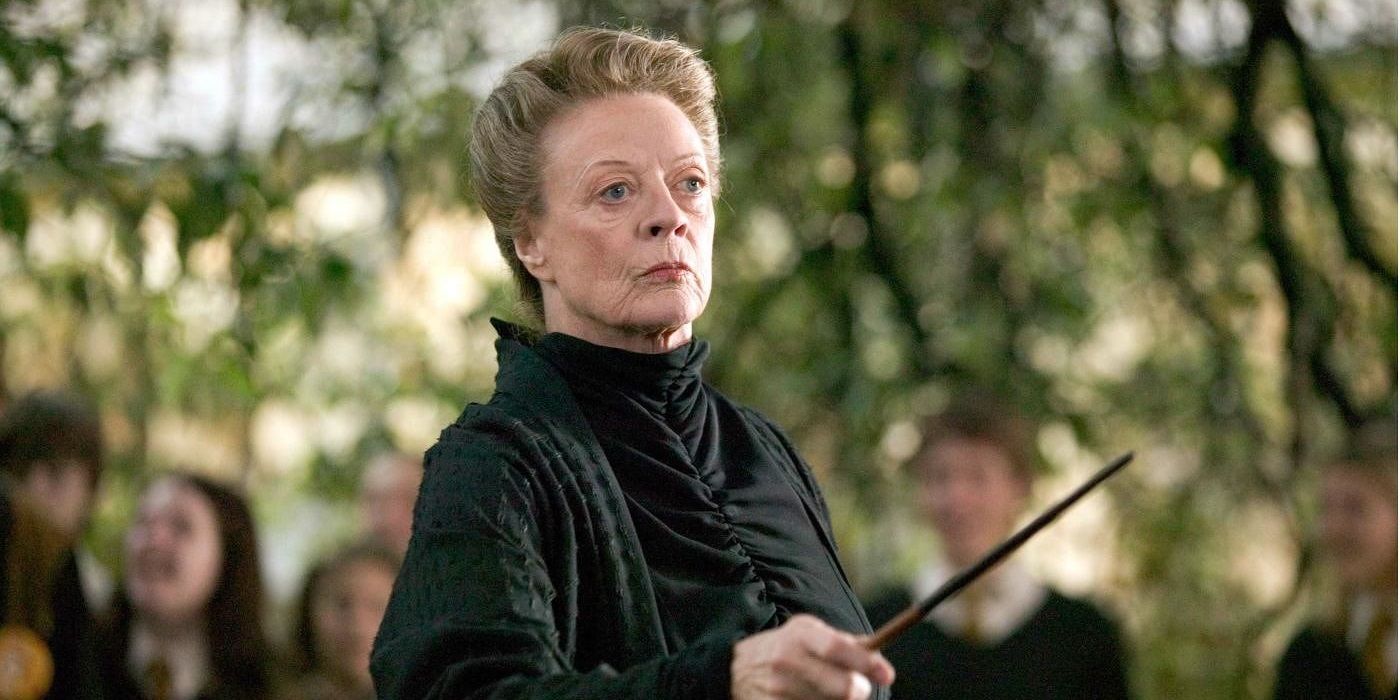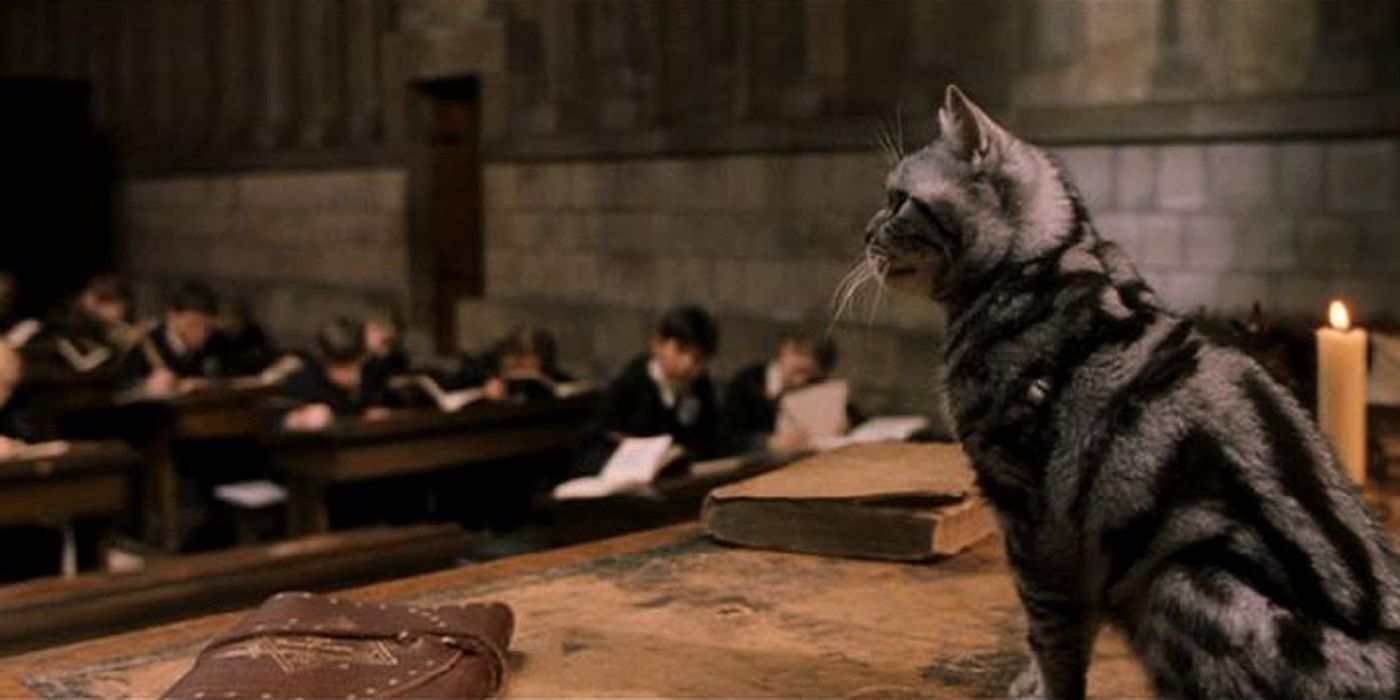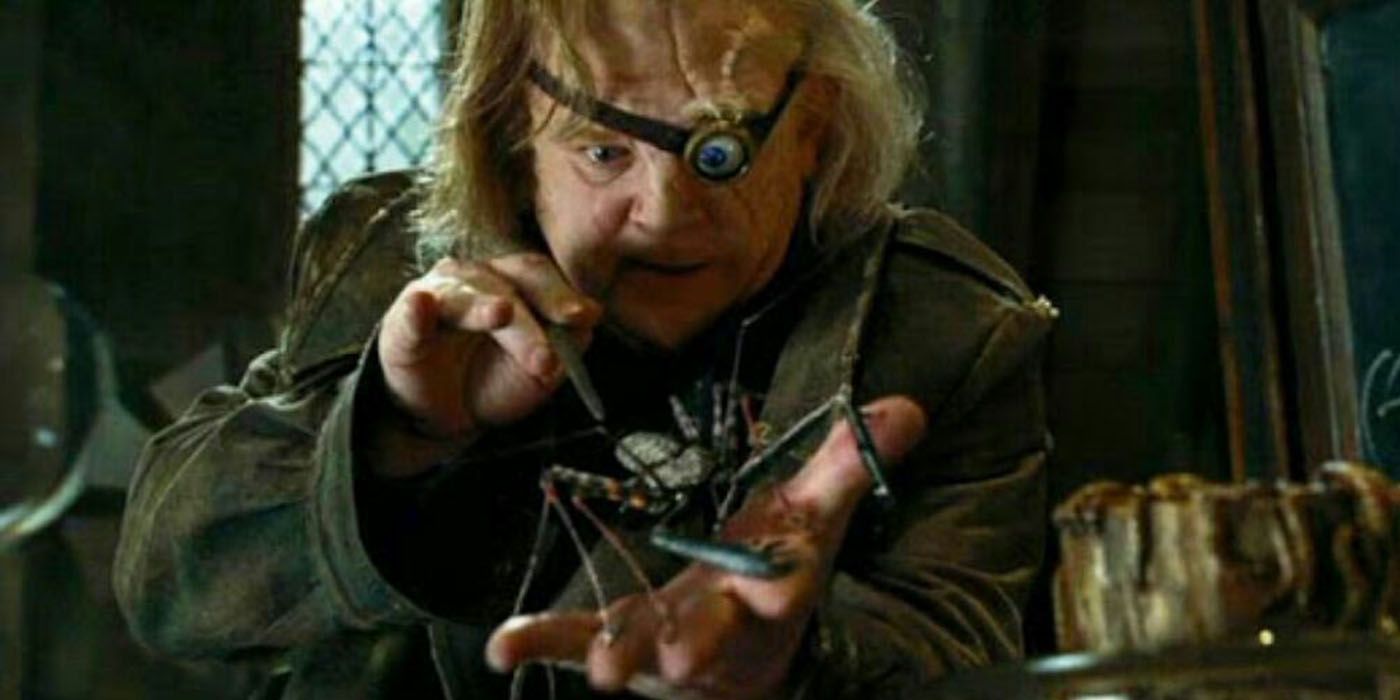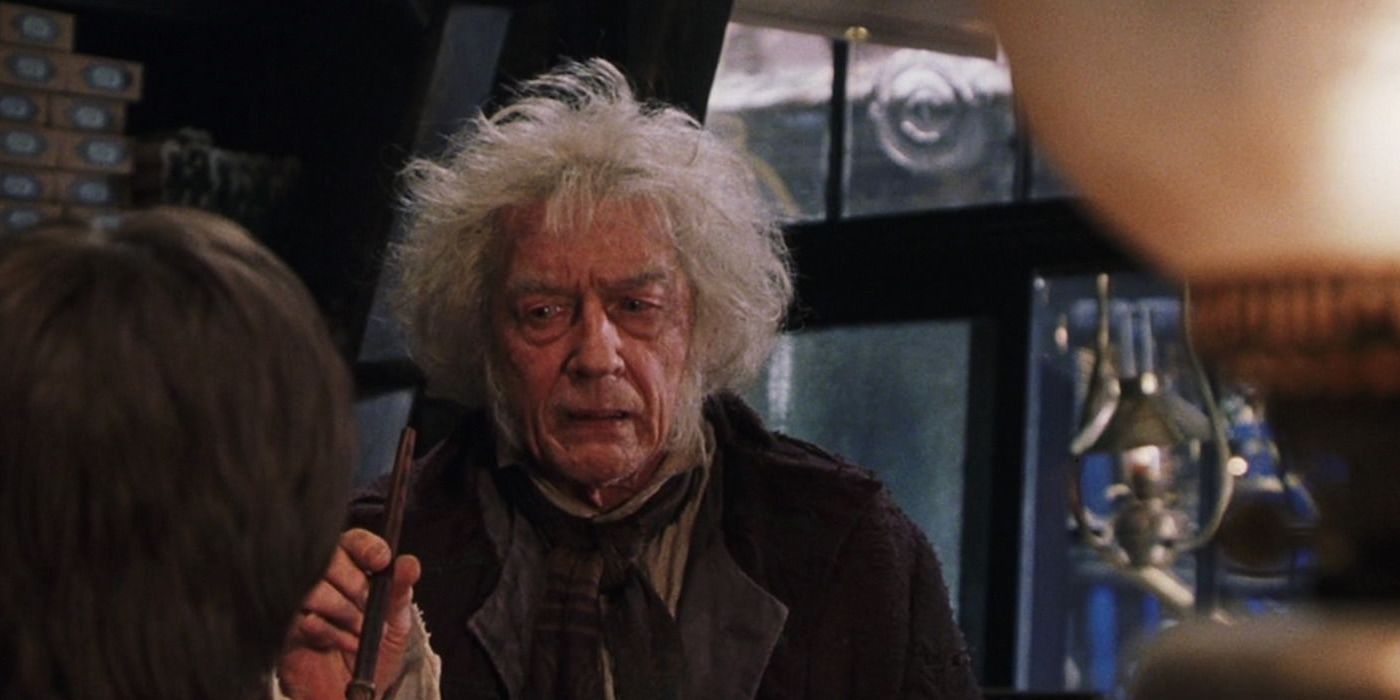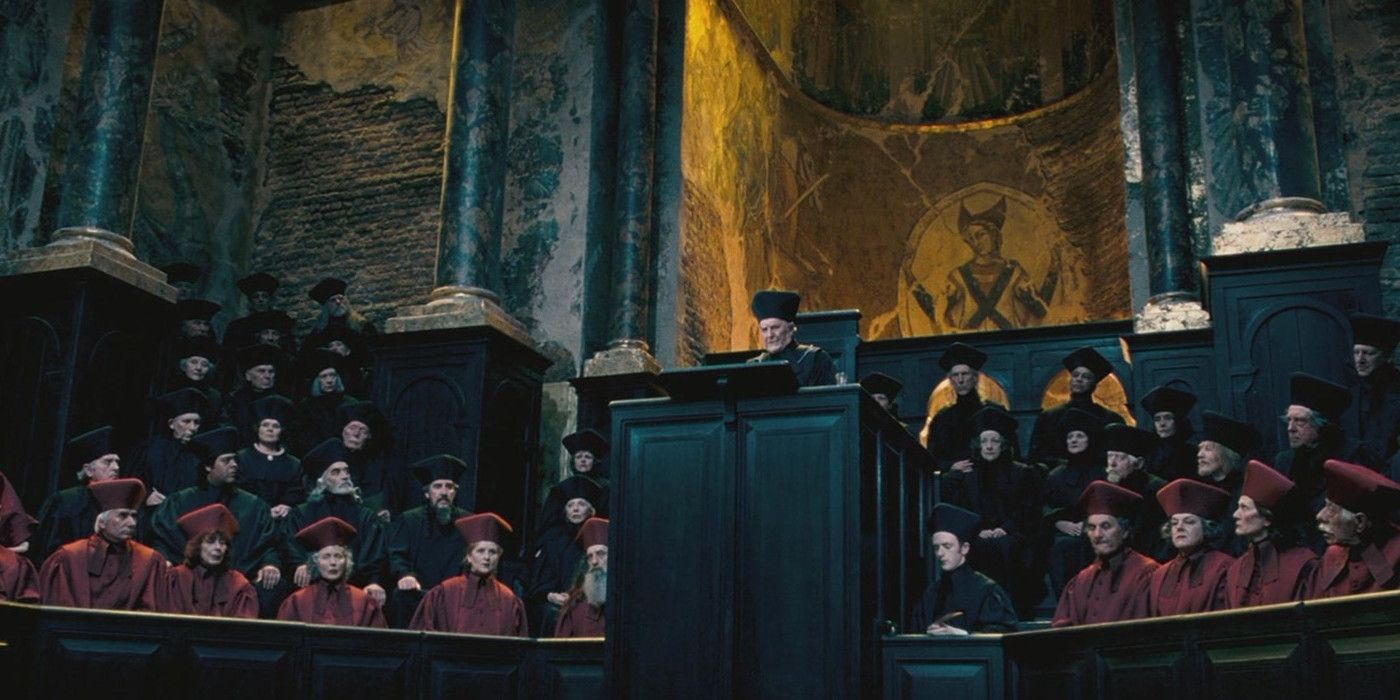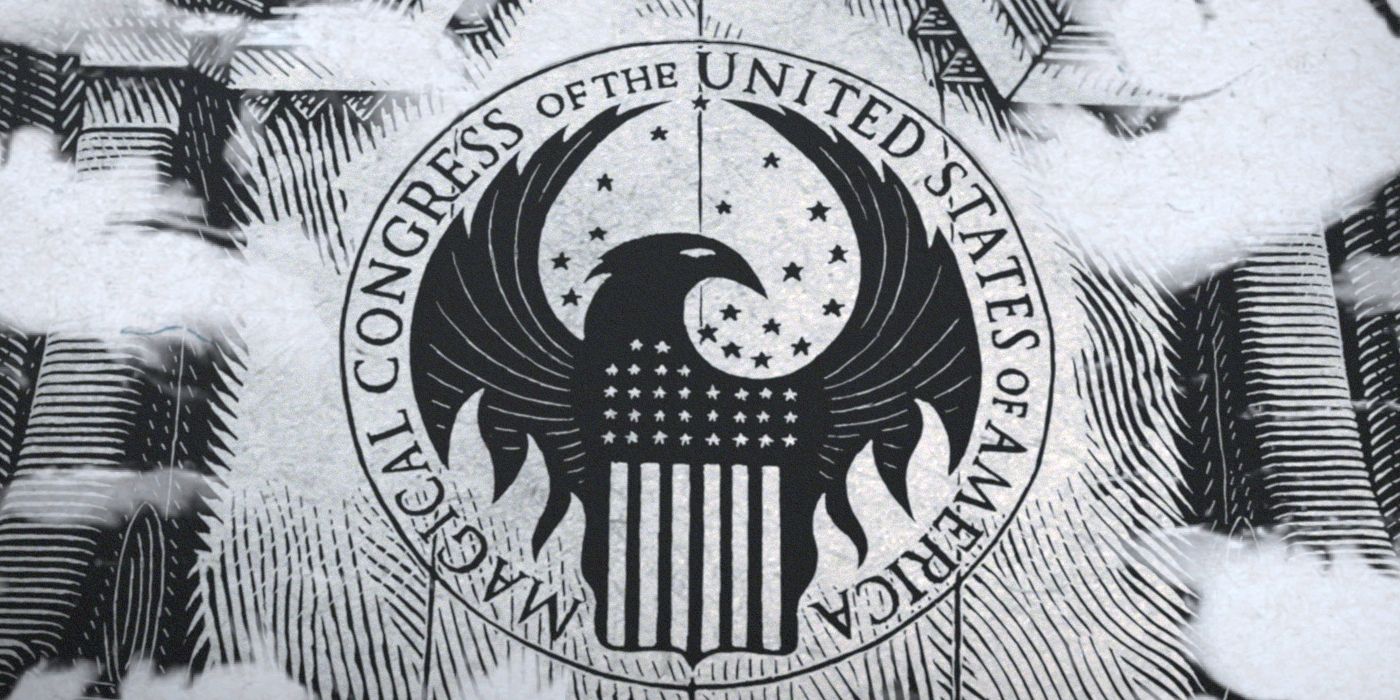Harry Potter and the Philosopher's Stone might be where the story first began, but many events occurred in the magical universe long before everyone's favorite boy wizard first defeated Voldemort. J.K. Rowling's website Pottermore has added countless stories before, during, and after the seven books. Fans have learned more not only about their favorite characters, but also about their favorite character's families many generations past. The history behind the Ministry of Magic and a variety of magical creatures is covered just as abundantly on Pottermore.
The film Fantastic Beasts And Where To Find Them and its future sequels contributed even more to Pottermore and the overall universe, especially where Newt Scamander, Gellert Grindelwald, and the magical communities of North America are concerned. The magical world's relationship with Muggles -- or No-Majs as they're known by in the United States of America -- has also received a lot of backstory through these sources. All this information not only provides history of the wizarding world before The Philosopher's Stone, but also provides a richer insight into key characters and events in the Harry Potter books and Fantastic Beasts films.
Here are the 20 Things You Didn't Know Happened Before The Philosopher's Stone.
The Minister For Magic Refused To Help Muggles During World War I
World War I may have been a conflict created and fought by Muggles, but it still impacted the magical world. Some wizards and witches were of the opinion that they should help Muggles during the devastating conflict. Archer Evermonde, the British Minister for Magic at the time, felt differently. He passed emergency legislation that forbade wizards and witches from aiding Muggles during World War I. Evermonde justified the legislation in the name of the International Statute of Secrecy. Even covertly aiding Muggles could lead to a serious breach. Not everyone agreed with the legislation, though, as thousands of wizards and witches still secretly helped Muggles. The uplifting stories of aiding Muggles helped create precedent for witches and wizards later helping Muggles during Voldemort's reign of terror.
Harry Potter's Great-Grandfather Spoke Out Against The Minister's Decision
Harry's great-grandfather Henry Potter served on the Wizengamot during World War I. Like his future grandson James and great-grandson Harry, Henry was not one to idly stand by when others were in need. Henry used his position to publicly speak out against Minister Evermonde's legislation. Publicly challenging the Minister's decision was controversial and had consequences for the Potter family's social standing. The Potters were excluded from the 'Sacred Twenty-Eight', the twenty-eight British families that remained "truly pure-blood." Henry's public sympathy for Muggles conflicted with the ideals of many of the other families in the group such as the Malfoys, Blacks, and Lestranges. Henry standing up for his beliefs was obviously more important, and certainly a trait that trickled down the family tree to James and Harry.
Newt Scamander Was Part Of The Ministry's Dragon-Wrangling Program During World War I
As Henry Potter and Minister Evermonde clashed on the issue of helping Muggles during World War I, the Ministry was also busy with a classified dragon-wrangling program on the Eastern Front. Newt Scamander's unparalleled expertise made him a natural asset to the Ministry's dragon-wrangling efforts. Newt primarily worked with Ukrainian Ironbelly dragons. The program was not long for the world, though. The dragons would only respond to Newt and attempted to devour everyone else. The Ministry was forced to shut down the initiative as a result. But it marks at least one occasion where Newt was on good terms and even working alongside government authority. Newt would not be the last significant character to deal with Ukrainian Ironbellies either as they are the dragons that guard the oldest, deepest vaults in Gringotts, like the dragon Harry, Ron, and Hermione escaped on after stealing the Hufflepuff cup from the Lestrange vault.
The Potter Family Got Rich Off Sleekeazy's Hair Potion
Despite exclusion from the 'Sacred Twenty-Eight', the Potter family continued to make a name for themselves after World War I. Henry Potter's son (and Harry's grandfather) Fleamont Potter made his mark on the family by inventing Sleekeazy's Hair Potion. Business thrived for the product as the Potter family quadrupled their fortunes. Sleekeazy's Hair Potion wasn't just a success during Fleamont's lifetime, though. It endured as a product as Hermione used it on her hair when attending the Yule Ball with Viktor Krum. The Potter family's extensive financial gains from Sleekeazy's Hair Potion helps explain the massive amounts of gold within Harry's vault at Gringotts. The wealth also helps explain the comfortable upbringing of James Potter, and how he and Lily were able to support themselves and baby Harry without working jobs during the First Wizarding War.
James And Lily Financially Supported Remus Lupin After Graduating From Hogwarts
As a werewolf, no one wanted to hire Remus Lupin despite his fierce intelligence, myriad skills, and many admirable traits. James and Lily supported their friend financially through that Potter family fortune. Lupin still sought employment, though, and lost any access to that generous fortune after James and Lily died. When Albus Dumbledore hired Lupin as the Defense Against the Dark Arts teacher in Harry's third year at Hogwarts, it was Lupin's first position of employment since graduating. One can only imagine the overwhelming pride and relief Lupin must've felt at receiving the kind of employment he deserved and being able to financially support himself independently. And to make it even better, he was teaching and mentoring the son of James and Lily, an individual possessing many of his parents' best traits.
Lupin's Father Is Partly Responsible For His Son Becoming A Werewolf
Remus Lupin's father Lyall Lupin truly loved his son and tried to help him through the horrors of his werewolf condition. Lyall is partly to blame for Remus becoming a werewolf, though. As Voldemort recruited more and more Dark creatures to his cause, the Ministry sought the help of experts like Lyall Lupin who were well-versed in Dark creatures. While working with the Ministry, Lyall served on a committee that was responsible for determining whether or not Fenrir Greyback was a werewolf. Greyback was caught with a werewolf pack that killed two Muggle children, but the committee thought Greyback was just a Muggle tramp caught in the wrong place at the wrong time. Lyall recognized Greyback as a werewolf and called all werewolves "soulless, evil, deserving nothing but death." Even though Greyback was released, he wanted revenge against Lyall for his attack on werewolves. Greyback retaliated by attacking Lyall's young son Remus. Lyall managed to save his son's life, but not before Remus was bit, and from then forever carrying the werewolf condition.
Lyall Lupin Captured A Boggart That Terrorized Scotland
Lyall Lupin's life wasn't just defined by his son or werewolves, though. The Ministry sought out Lyall in the first place because of his expertise in Dark creatures. While working with the Ministry, Lyall captured a Boggart that terrorized Scotland. The Boggart in question was called the Screaming Bogey of Strathtully. It fed on the fears of many Muggles to the point that it became an enormous black shadow with glowing white eyes. Lyall succeeded in trapping the Boggart in a matchbox, thus saving many Scottish Muggles. Given this chapter in Lyall's legacy, it seems fitting that his son's first lesson as Defense Against the Dark Arts teacher at Hogwarts revolved around defending one's self against Boggarts. Both Lyall and Remus Lupin thus helped future generations against the terror of Boggarts.
Hogwarts Had To Be Evacuated For 3 Days In 1876 Because Of A Failed Attempt To Banish Peeves
Boggarts may seem more terrifying than the ordinary ghost, but Peeves is no ordinary ghost. His antics began long before Harry ever set foot in Hogwarts. In 1876, the Hogwarts caretaker Rancorous Carpe was determined to banish Peeves from the castle. Carpe created an elaborate trap that involved many weapons and a large bell jar enchanted with Containment Charms. The plan backfired horribly as Peeves escaped from the bell jar and used the weapons to amuse himself. Hogwarts was evacuated for three days as a result. The Headmistress at the time eventually made a contract with Peeves, allowing him privileges such as swimming once a week in the boys' toilets on the ground floor. The terms pleased Peeves and life returned to normal at Hogwarts again. Rancorous Carpe chose retirement instead of continuing the feud with Peeves. No one ever tried to banish Peeves from Hogwarts again, and Peeves would continue to make the lives of future caretakers like Argus Filch miserable.
A Descendant Of Salazar Slytherin Helped Found Ilvermorny
The founding of Hogwarts is more closely connected to the founding of America's Ilvermorny than one might think. One of Ilvermorny's founders was Isolt Sayre. Isolt's mother was born into the House of Gaunt. The Gaunts are pure-blood descendants of Salazar Slytherin himself. In fact, Voldemort's mother Merope was a Gaunt. Isolt's mother distanced herself from the Gaunt family, though, and later paid for this betrayal as she and her husband were murdered in a fire by her sister Gormlaith Gaunt. The influence of Isolt's mother and lack of influence from the Gaunts led to Isolt falling in love with and marrying the No-Maj James Steward. She and her husband helped found Ilvermorny in 1627. Despite the drastic differences in ideologies, it's fascinating that a descendant of Slytherin played an integral role in creating America's school of witchcraft and wizardry.
The Ban On Experimental Breeding Was Written By Newt Scamander
Long after Newt met former Ilvermorny students Tina and Queenie Goldstein, he wrote the Ban on Experimental Breeding which was enacted in 1965. The famous and important law is designed to regulate the breeding of magical creatures. The law was designed to prevent wizards and witches from experimentally breeding dangerous creatures like Basilisks and Acromantulas. Some notable characters would go on to create new creatures and seemingly violate the law including Rubeus Hagrid's breeding of Blast-Ended Skrewts and Pygmy Puffs bred by Fred and George Weasley. The precedent of the law existed before 1965 as Tina told Newt in Fantastic Beasts And Where To Find Them that magical creatures aren't allowed to be bred in New York, and MACUSA had shut down the operations of breeders before.
Centaurs and Merpeople Refused "Being" Status
There is a huge difference between sentient magical creatures like Centaurs and Merpeople, and non-sentient creatures like Blast-Ended Skrewts. In order to recognize this key difference, "Being" status can be granted to "any creature that has sufficient intelligence to understand the laws of the magical community and to bear part of the responsibility in shaping those laws." Both Centaurs and Merpeople were offered "being" status. However, they both declined the offer as they didn't want to be associated with other species that had "Being" status such as Vampires and Hags. The Centaurs and Merpeople on the Hogwarts grounds generally seemed to like keeping to themselves, so it's also not too surprising that they'd reject the offer to officially become part of the magical community.
Dolores Umbridge Actively Lied About Her Family Heritage
Centaurs weren't the only thing Dolores Umbridge wasn't fond of. She also wasn't fond about her family heritage, to the point that she actively lied about it to others. Umbridge always told everyone she was pure-blood, but her mother was a Muggle and her brother a Squib. Her father was a wizard but he worked as a janitor at the Ministry of Magic. As Umbridge rose through the ranks of the Ministry, she forced her father to retire so he wouldn't tarnish her career and reputation. She offered him money if he chose retirement and he agreed to his daughter's wishes. If anyone ever asked if she was related to the janitor Umbridge, she always said no and instead said he was a deceased former member of the Wizengamot. Dolores Umbridge used these lies to later secure her position as head of the appalling Muggle-Born Registration Commission.
The Ministry Tried And Failed To Find An Alternative To Dementors Guarding Azkaban
Even before Voldemort took control of the Ministry and gave way to horrors like the Muggle-Born Registration Commission, the Ministry still engaged in immoral acts like using Dementors to guard Azkaban. During the 1700s, the Minister for Magic Eldritch Diggory visited Azkaban and experienced firsthand the devastating effects that Dementors had on the prisoners. He wanted to find an alternative to Dementors guarding Azkaban, and even formed a committee to determine a viable solution. Minister Diggory's ideas were met with a lot of controversy in the fear that Dementors would target the mainland if they could no longer feed off the prisoners of Azkaban. Diggory died in office and as the main proponent of finding a different solution, the campaign ceased. It wouldn't be until Voldemort's defeat a couple centuries later that Dementors would finally guard Azkaban no more.
Draco Malfoy's Grandfather May Have Poisoned The First Muggle-Born Minister For Magic
Throughout the years, the Ministry tried and did make progress in many respects. Eldritch Diggory showed that the Ministry could have a moral compass when trying to find an alternative to the Dementors guarding Azkaban. Progress continued to be made in the 20th century when Nobby Leach was elected Minister for Magic in 1962. Leach was the first Muggle-born individual to ever hold the office. In 1968, however, Leach stepped down from his position after contracting a mysterious illness. Many believe that Draco Malfoy's grandfather and Lucius Malfoy's father, Abraxas Malfoy, actually poisoned Leach. The Malfoys would've detested the idea that a Muggle-born individual was Minister for Magic, though Abraxas was never proven guilty of the accusation. It seems like the makings of a major scandal, but it never seemed to plague Draco's life at Hogwarts.
Minerva McGonagall Fell In Love With A Muggle...
Prejudice towards Muggles is unfortunately a constant factor in wizarding history. But arguably more important is the capacity for love that wizards and witches can have for Muggles. Before she ever became the stern Transfiguration teacher at Hogwarts, Minerva McGonagall fell in love with a Muggle named Dougal McGregor at age eighteen. She nearly married him, but chose not to as she'd experienced firsthand with her parents the negative effect of lovers lying to one another about their identities and shirking their ambitions as a result. McGonagall wanted to tell Dougal why she wasn't marrying him, but couldn't for the sake of the International Statute of Secrecy. She could offer him no explanation, leaving both herself and Dougal heartbroken. Dougal was later murdered during the First Wizarding War by Death Eaters in a random attack against Muggles. On top of the heartbreak from all those years ago, McGonagall now wrestled with the question of whether she could've saved Dougal if they'd married.
McGonagall Used Her Abilities As An Animagus To Serve As A Ministry Informant
Minerva McGonagall was one of the few witches and wizards who was not only an Animagus, but an Animagus officially registered with the Ministry of Magic. She used this ability and legal standing with the Ministry to her advantage during the First Wizarding War. Disguised as a tabby cat, she spent many nights spying on Voldemort's followers. She'd bring all imperative information to the Ministry, trying to aid them in their fight against Voldemort. Unlike the Second Wizarding War, McGonagall wasn't part of the Order of the Phoenix at the time which is why she brought the information to the Ministry instead of the Order. The Order was viewed as a bit of an extremist group at the time. Regardless, McGonagall took action against Voldemort in in what she felt was the best way she could at the time. Her students had no idea their strict Transfiguration teacher was a Ministry informant by night. The contrast perfectly captures the beautiful essence of Minerva McGonagall.
Aurors Were Allowed To Use Unforgivable Curses During The First Wizarding War
Voldemort and his followers obviously had no compunction about using the Unforgivable Curses during their reign of terror. In order for the Aurors to stand a chance against them, they were allowed to use Unforgivable Curses. Some might argue that government employees shouldn't be allowed to magically control, torture, and kill, but if used within reason and considering what they were up against, most felt it was justified. Auror Alastor "Mad-Eye" Moody is confirmed to have used the Killing Curse against several of Voldemort's followers, including the Death Eater Evan Rosier. During the Second Wizarding War, Aurors were once again allowed to use Unforgivable Curses as it was shown to be essential for Aurors to have the spells at their disposal the last time.
Ollivander Revolutionized The Way Wands Were Made
Before Garrick Ollivander, wands were made with a wide extent of cores. Customers would give wandmakers a magical substance and the wandmaker would turn that substance into the core. Ollivander thought this process changed a wand's nature too much. He realized it would be more effective to use a specific core already encased within the wand and with a specific kind of wandwood. Through this process, the wand would choose the wizard rather than the wizard choosing the wand. Like any traditions that are challenged, Ollivander's approach was met with skepticism, but witches and wizards everywhere soon realized Ollivander's way of making wands was superior. How he perfectly located and matched the exact right wand cores and wandwoods together are his own secrets. Regardless, this approach to wandmaking certainly played a major role in furthering the connection between Harry and Voldemort and their twin cores.
The International Statute Of Secrecy Was Established The Same Year As The Salem Witch Trials
Fans are familiar with the International Statute of Secrecy, the law which ensures that Muggles remain ignorant of magic and the wizarding world. What many fans don't know is that the International Statute of Secrecy was officially established in 1692, the same year that the Salem Witch Trials began. While it hasn't officially been stated in canon yet, it seems quite likely that the Salem Witch Trials pushed the law into official existence. The witch-hunt would've been proof that Muggles not only suspected too much about the magical community, but could prove incredibly dangerous to the existence of wizards and witches. Stricter boundaries between the magical and non-magical worlds clearly needed to be imposed. After already being signed in 1689, the events of 1692 showed that the International Statute of Secrecy needed to be officially established to enact those strict boundaries.
MACUSA Was Established Almost A Century Before The No-Maj United States of America
While the Salem Witch Trials helped spur magical communities across the globe to embrace the International Statute of Secrecy, the tragic events of course hit closest to home. This led to the creation of the Magical Congress of the United States of America, the governing body fans met in Fantastic Beasts And Where To Find Them. MACUSA existed long before Newt Scamander showed up in New York, though. MACUSA was established in 1693, almost a century before the No-Maj United States of America would exist. While the Salem Witch Trials made MACUSA distance themselves from non-magical communities even more drastically than other countries, they were actually more progressive than their No-Maj counterparts. Many conflicts would rage between No-Majs until their United States of America was established while the Salem Witch Trial helped unify wizards and witches into creating MACUSA.
--
What events from before Harry Potter and the Philosopher's Stone did we miss? Let us know in the comments!

